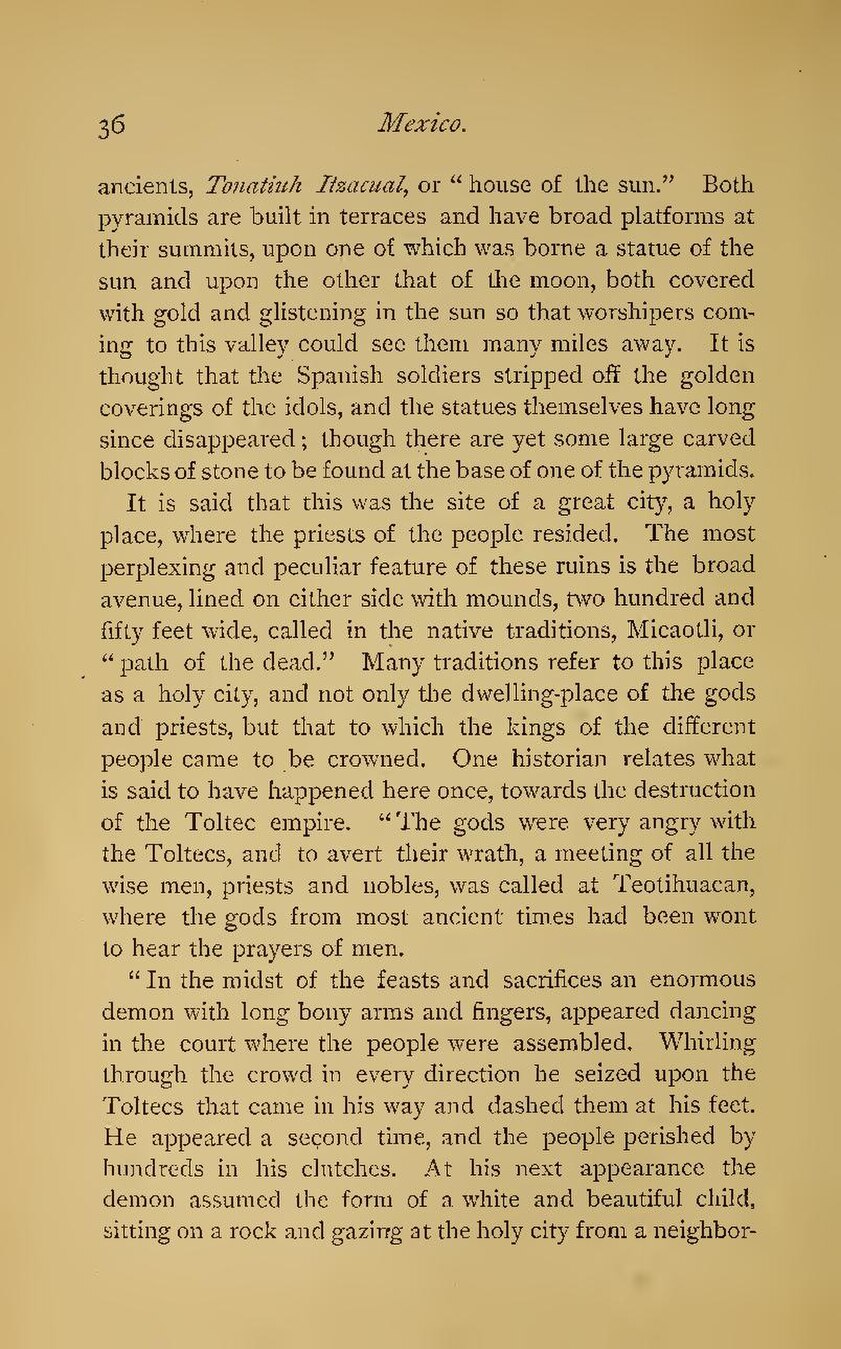ancients, Tonatiuh Itzacual, or "house of the sun." Both pyramids are built in terraces and have broad platforms at their summits, upon one of which was borne a statue of the sun and upon the other that of the moon, both covered with gold and glistening in the sun so that worshipers coming to this valley could see them many miles away. It is thought that the Spanish soldiers stripped off the golden coverings of the idols, and the statues themselves have long since disappeared; though there are yet some large carved blocks of stone to be found at the base of one of the pyramids.
It is said that this was the site of a great city, a holy place, where the priests of the people resided. The most perplexing and peculiar feature of these ruins is the broad avenue, lined on either side with mounds, two hundred and fifty feet wide, called in the native traditions, Micaotli, or "path of the dead." Many traditions refer to this place as a holy city, and not only the dwelling-place of the gods and priests, but that to which the kings of the different people came to be crowned. One historian relates what is said to have happened here once, towards the destruction of the Toltec empire." The gods were very angry with the Toltecs, and to avert their wrath, a meeting of all the wise men, priests and nobles, was called at Teotihuacan, where the gods from most ancient times had been wont to hear the prayers of men.
"In the midst of the feasts and sacrifices an enormous demon with long bony arms and fingers, appeared dancing in the court where the people were assembled. Whirling through the crowd in every direction he seized upon the Toltecs that came in his way and dashed them at his feet. He appeared a second time, and the people perished by hundreds in his clutches. At his next appearance the demon assumed the form of a white and beautiful child, sitting on a rock and gazing at the holy city from a neighbor-
